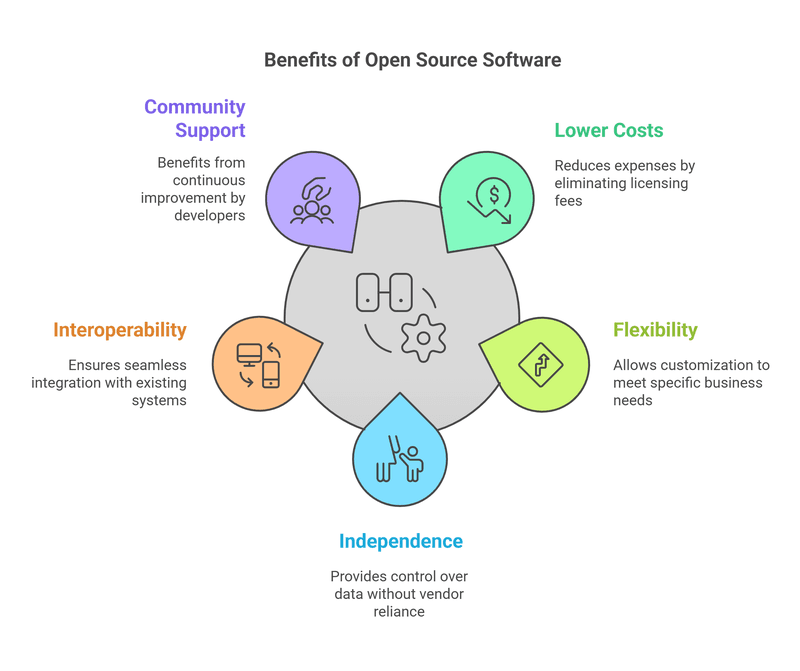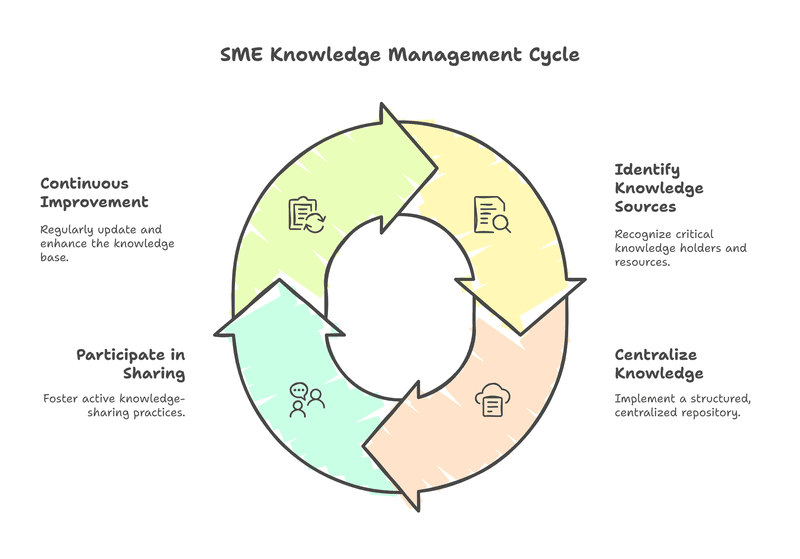Systematic management of corporate knowledge that makes companies leaner, more innovative, and more competitive
Introduction: Knowledge Management — Something You Have to Do
Numerous organizations only consider knowledge management when the likes of ISO 9001 or 27001 standards demand it. But this view is too narrow: Even in the absence of certification, small and medium-sized enterprises (SMEs) can derive substantial value from properly designed knowledge processes.
A knowledge-driven company can react more quickly to market fluctuations, boost productivity, and fuel innovation. Nonetheless, many SMEs still have only rudimentary knowledge management in place: Information is stuck in silos, knowledgeable employees leave without transferring their expertise, while ineffective processes drain time and money.
This article will discuss why knowledge management is a strategic need for every SME – and why it’s affordable to start with open-source solutions.
The Necessity Of Knowledge Management For SMEs
Issues Without Management of Knowledge
Typical problems in Small and medium-sized enterprises have no systematic knowledge management:
- Knowledge loss when employees leave: Long-serving staff move on, taking with them valuable knowledge.
- Duplicate work and inefficient processes: The lack of a central knowledge base means that work often gets duplicated because information isn’t easy to share or find.
- Lack of innovation: When there are no new ideas coming in from existing knowledge, companies fail to reach the horizon of what they can achieve.
- Long onboarding period for new employees: If knowledge is not structured and transferred, it takes significantly longer for new hires to be fully productive.
- Lack of transparency in decision making: Information is fragmented and data is not easily accessible, forcing leaders to make decisions without the complete picture.
Structured Knowledge Management and Its Benefits
When organizations collect, store, and disseminate knowledge in a systematic way, they realize benefits across multiple dimensions:
✅ Improved efficiency: Information is always available to avoid duplication of efforts.
✅ More informed decision-making: Leaders can draw from a dependable reservoir of knowledge.
✅ Accelerated onboarding: New employees can hit the ground running with the knowledge they need, helping them to get up to speed faster.
✅ More innovation: Existing knowledge creates new ideas and new ways to do business.
✅ Service and quality improved: Insights are easier to extract and apply for specific customers.
Thus, knowledge management is far more than mere documentation — it is a sustainable strategy to optimize the entire organization.
An Open-Source Solution for Knowledge Management Does Not Need to Cost a Fortune
The fact is, most small/mid size businesses balk at the idea of investing in professional knowledge management for fear of foot-deep price tags tied to specialized software or external consultants. Open-source solutions present secure, powerful, flexible and economical alternatives.
Why Open Source?
- 🚀 Lower costs: only charges for implementation and maintenance, without spending on licensing.
- 🚀 An extremely flexible solution: Systems can be adapted to exact business needs.
- 🚀 Independence: Full control over data and processes without proprietary vendors.
- 🚀 Interoperability: Open-source solutions usually integrate best in place (ex: Nextcloud, ERP).
- 🚀 Community support: Large developer communities mean that the frameworks are always being updated and improved.

What Are Best Systems for SMEs to Obtain Open Source?
Open-source platforms that can be used to support knowledge management:
- Nextcloud + Wiki: Files, but with a directed knowledge storage
- MediaWiki (Wikipedia’s technology): Best for interactive knowledge archives that promote collaboration.
- BookStack: Open source documentation tool that provides clear, easy to navigate information.
- XWiki: A highly customizable wiki tool designed for organizations of any size.
Such ways allow for the professional entry into knowledge management without the burden of expensive proprietary systems.
How can SMEs Get Knowledge Management Right
We would not need anything quite that complicated just to have a knowledge management system. What matters most is a clear structure and the active participation of all employees.
Step 1: Identify Sources of Knowledge and Key Holders
- Who in which departments possesses critical know-how?
- What documents/ reports/ experiences can we rely on?
- What employee information do they routinely require?
Step 2: Centralize
- Deploy open-source solution (e.g. Nextcloud, wiki) as central knowledge repository.
- Use some form of structure to define where things are stored and how they are categorized.
- Set up user roles and access permissions.
Step 3: Participate in the Knowledge-Sharing
- Hold training or internal meetings to share best practices.
- Ensure that new employees go through proper onboarding with experienced staff systematically.
- Create systems to continually refresh what you maintain.
Step 4: Keep Improving
- Keep your knowledge base routinely reviewed and updated.
- Shaketing meat and working with it.
- Make sure you write down best practices and lessons learned regularly.

Conclusion: KM as a Strategic Competitive Advantage for SMEs
Most businesses still see knowledge management merely as a compliance check. In practice, it has tremendous potential: A comprehensive, company-wide knowledge management process can lead to optimization of processes and flows, accelerate innovation, and sustainably raise competitiveness.
It is cost-effective and flexible to implement professional knowledge management with open-source technologies. Fundamentally, success is about recognizing knowledge management as more than an IT tool — it should be seen as a strategic agenda.
💡 Disclaimer: The businesses that actively use and distribute their know-how gain a key competitive advantage over time.
Hashtags:
Tags: #KnowledgeManagement #SMEs #BusinessEfficiency #DigitalTransformation #OpenSource

Pingback: 5S Knowledge Management: A Systematic Framework for Organizational Knowledge Excellence